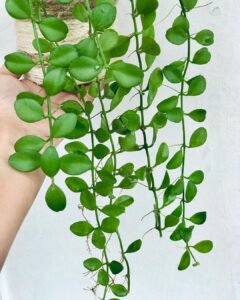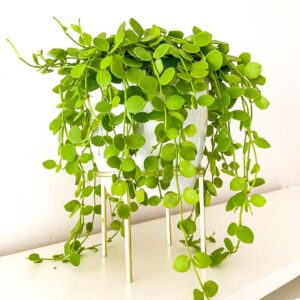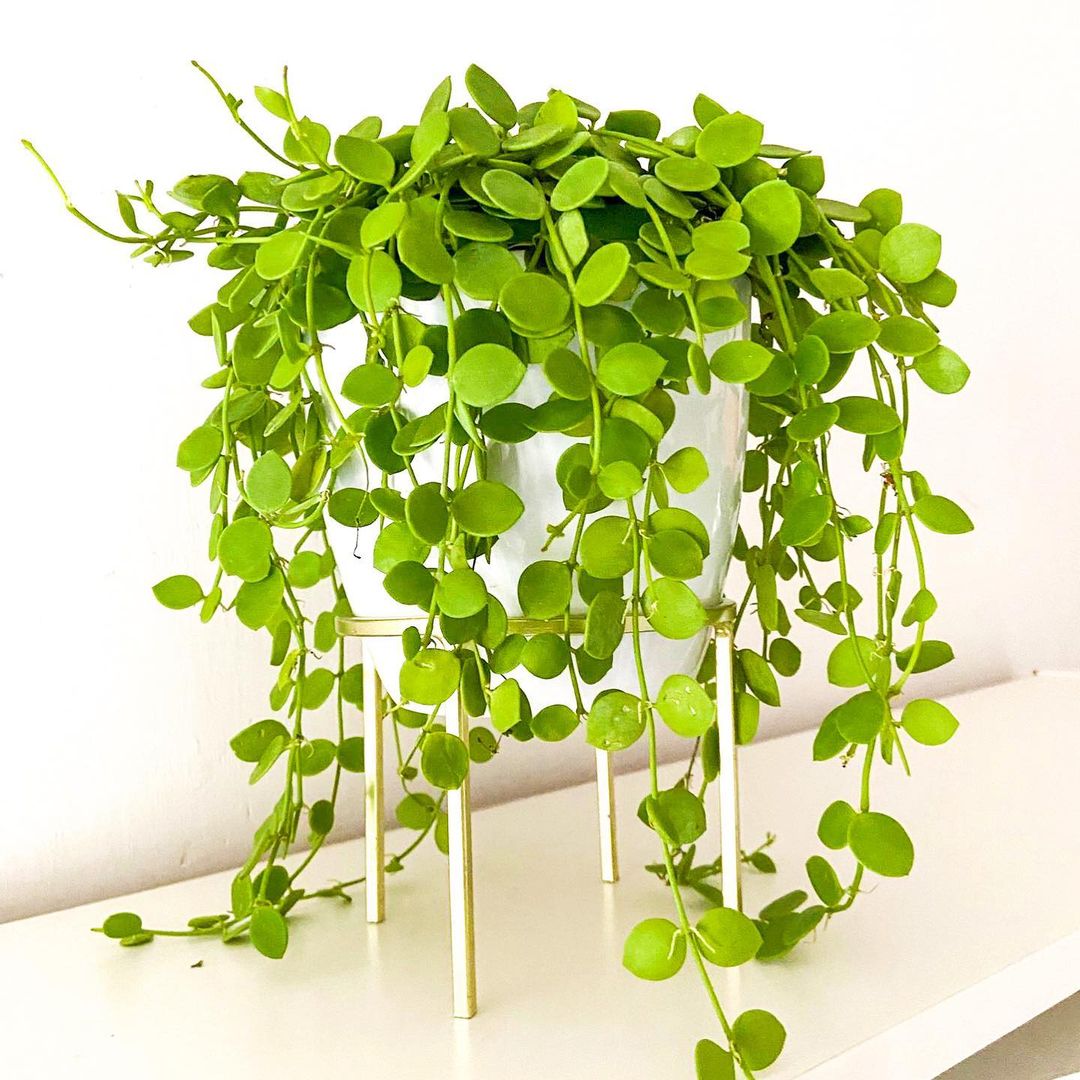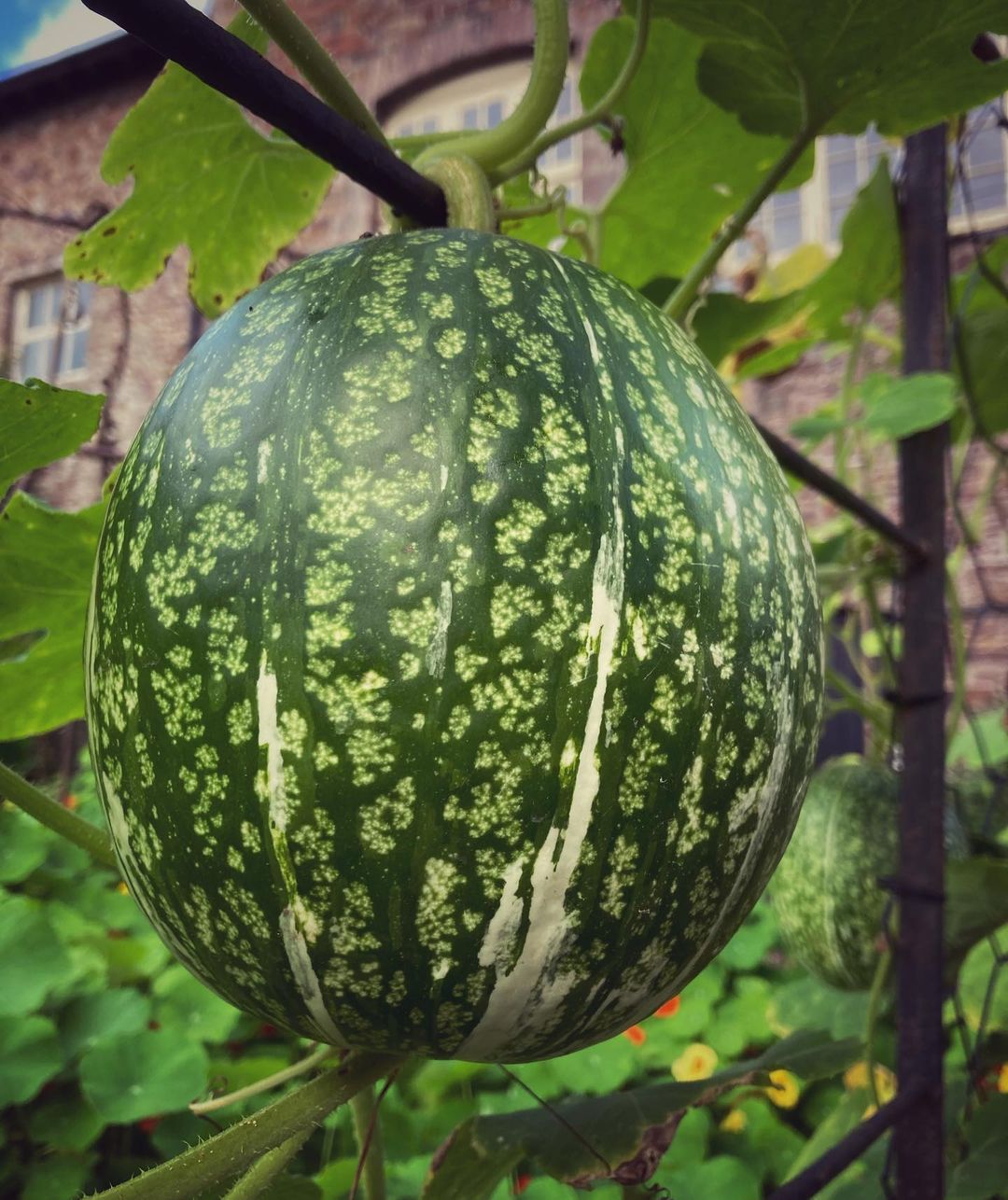Discover the secrets of Dischidia Nummularia Care in this comprehensive guide and learn how to keep your String of Nickels thriving.
The String of Nickles is a unique, trailing plant that is popular among indoor gardeners for its ornamental appearance and ease of care. To ensure healthy growth and longevity, a few simple Dischidia Nummularia Care requirements must be met.
Common Names: String of Nickels, Button Orchid
Botanical Name: Dischidia nummularia
USDA Zones: 10a-11b
Read: Dischidia Vidalii (Kangaroo Pocket) Care
About Dischidia Nummularia

The string of nickels (Dischidia nummularia) is a succulent vine from tropical regions in Asia, India, and Australia. It belongs to the family of epiphytes, such as air plants and orchids, which grow on other plants like trees and get their nutrients from the surrounding air, rainwater, and organic matter instead of soil.
The string of nickels creeps along using its slender stems and bears circular, dull greenish-yellow leaves. In its natural habitat, it can often be seen forming dense masses on trees. The plant features thick and fleshy opposite leaves, occasionally covered in a powdery bloom when they are young. Dischidia Nummularia produces white to yellowish-white flowers that emerge in clusters of 1 to 5 blooms, usually during spring. As they mature, their fruits split open on one side, revealing follicles.
Although it is quite an exceptional houseplant that is commonly seen, Dischidia Nummularia is a hardy plant that can thrive in almost any indoor environment. Unlike most succulents, this plant doesn’t require bright and sunny spots; rather, it prefers low-light settings.
Propagating Dischidia Nummularia
- Start by taking cuttings from a healthy and established plant and allow the cut stems to dry and form calluses for a few hours before rooting them in moist sphagnum moss.
- Within two or three weeks, roots should emerge and become established.
- Once the cuttings are well-rooted, it’s time to repot them into a suitable medium such as orchid potting mix, shredded coco coir, or shredded bark.
- From there, care for them as you would for a mature string of nickels.
It’s important to keep an eye out for roots already developing along the stem while taking cuttings, as this can increase the success rate of propagation.
Note: However, it’s crucial to handle the plant carefully as it secretes a milky sap that can cause skin irritation. Make sure to wash your hands with soap and water after handling the plant.
Read: Dischidia Pectinoides Care
Growing Needs of Dischidia Nummularia
Light
Dischidia Nummularia thrives in low-light environments, making it an ideal choice for north- or east-facing windows with limited sunlight indoors.
Experts recommend giving the plant some sunlight during the day, with a small amount of morning or late afternoon sun being sufficient. If you grow the plant outdoors, it is advisable to place it in a shaded area that shields it from the hot afternoon sun. People often cultivate a string of nickels in hanging baskets or planters placed under covered patios or porches, which offer an optimal growing environment.
Soil
Use a well-draining growing medium that is light and airy and has a high organic matter content. As an epiphyte, the plant’s roots require airflow to thrive. Good options for the growing medium include an orchid potting mix, shredded coco coir, or shredded bark.
Tip: Avoid using regular potting soil because it is too dense and can suffocate and rot the roots of the plant.
Water
Keep the potting medium remains evenly moist. However, take care not to waterlog the roots, as they should never be left sitting in water for long periods. Additionally, regularly misting the plant can be beneficial, as it helps it absorb moisture through the leaves.
Temperature and Humidity
They require warm and humid conditions and cannot tolerate cold temperatures or frost. Although they are hardy in USDA zones 10a to 11b, people usually cultivate them indoors as houseplants. To promote optimal growth, you should place the plant in an area with some extra humidity, such as a kitchen or bathroom, or on a tray of pebbles filled with water, even though it can also grow well in average household humidity.
Read about Graptosedum ‘Daruma Shu-rei’ Care
Dischidia Nummularia Care

Fertilizer
It is not necessary to fertilize the plant on a regular basis, but it is important to make sure that the potting medium contains enough organic matter. If you wish to provide additional nutrients, you may choose to apply a low-strength balanced fertilizer once a year at the start of the growing season.
Misting Dischidia
Misting Dischidia nummularia can be beneficial not just for increasing humidity but also because it is an epiphyte and benefits from some extra moisture. If you keep the plant outdoors, misting may not be necessary due to the higher humidity in the air and natural rainfall.
Pests and Diseases
It is also essential to be vigilant for common pests such as spider mites, fungus gnats, aphids, and mealybugs, which can attack a Dischidia nummularia. Regularly inspecting the plant for pests and treating any infestations promptly is critical to keep the plant healthy.
To prevent root rot, you should avoid overwatering your string of nickels and ensure that the potting medium provides adequate airflow to the roots, as root rot is the most common disease that affects this plant.
Dischidia Nummularia Shriveling?
When you observe shriveling leaves on your Dischidia Nummularia, it could be a result of either excessive dryness or prolonged moisture. Interestingly, the outcome may not be distinguishable in some cases.
In situations where the plant has remained parched for a prolonged period, the leaves will start to shrivel due to lack of hydration. Conversely, if the plant is kept too damp, the roots will begin to rot, hindering the plant’s ability to absorb moisture and resulting in dehydration.
To identify the root cause of shriveling leaves on your Dischidia, insert your finger into the potting mix. Is it completely dry or excessively moist? This will provide a clue about the issue.
Dischidia Nummularia Uses
The String of Nickels has a lovely appearance that overflows the edges of its container, making it an excellent decoration for a small table or a hanging basket. Additionally, it can be grown outdoors during warmer weather.
Dischidia Nummularia Companion Plants
The best companion plants for Dischidia Nummularia are Aglaonema, Dieffenbachia, and Ficus.
Read: Dischidia Geri Care in the Pots



